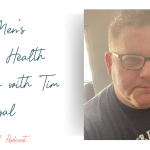An important part of what I explore on the podcast is what it truly means to live well, feel fulfilled, and be happy. We often seek happiness as a destination, a reward for effort, or a result of perfect circumstances. But what if I told you the path to genuine, sustainable happiness starts with something much simpler, something you already possess?
Today I wanted to connect that idea to one of the simplest, most profound habits that is proven to increase happiness: the practice of gratitude.
It’s easy to overlook gratitude because it’s such a familiar term; it’s become a bit of a throwaway idea. It shows up on every self-care list and journal prompt and becomes the unofficial theme for November with quotes and signs and all manner of reminders to “be grateful” without understanding the context. It gets diluted, almost like a piece of mandatory homework rather than a key to liberation.
Beneath all the hype, which distracts us from how important it actually is, you’ll find a transformational practice like no other. Gratitude doesn’t just make us feel good; it rewires how we see the world. And most importantly, it’s where we need to start to find the things we want…like happiness.
There’s a quote from Francis Bacon I love that sums it up beautifully: “It’s not the happy people who are grateful. It is the grateful people who are happy.” Today, I’ll explore what that really means and how you can use gratitude to build real, sustainable happiness.
The Link Between Gratitude and Happiness
Research has shown over and over that gratitude isn’t just a nice idea; it’s a powerful tool for well-being. Dr. Robert Emmons, one of the leading authorities on gratitude, calls it the “queen of the virtues” because it connects to so many areas of health and happiness.
In his studies, people who practiced gratitude regularly reported greater life satisfaction, deeper relationships, lower stress levels, and even improved physical health. But beyond the data, what’s fascinating is why gratitude works so well.
When you focus on what you appreciate, you literally train your brain to seek more of it. I have often used the simple phrase “What you focus on, you fuel.” Have you noticed that when you find what’s good, it becomes easier to find more of it? When you are aware of something, you spot it quicker. And then your brain learns to keep doing that.
The science behind this is a one-two punch of the Reticular Activating System and something called neuroplasticity. As Inigo Montoya said in The Princess Bride, “Let me explain. No, there is too much. Let me sum up:”
Our brains need a way to filter out all the input coming at us. If we let everything in, we’d never be able to function, so our brains ignore a lot…some more than others! The Reticular Activating System (aka RAS) is a network of neurons in the brainstem that acts as the brain’s “gatekeeper” for sensory information. It acts as a filter for sensory input to determine what is important enough to reach your conscious awareness and what to ignore. This filtering system is why you can be in a room full of people talking and clearly discern the voices of your children or spouse, or how, when you buy a car, you “suddenly” see them on the road everywhere. Fun fact: This filtering system is the science behind vision boards.
The other part of the brain equation is something called neuroplasticity. It’s the brain’s ability to reorganize itself by forming new neural connections throughout life. This is one of the most encouraging things, in my opinion, because it means we can always change and grow, regardless of our age. The way it works is when you repeatedly perform an action or think a certain thought, you strengthen the neural pathways associated with it, making it easier and more automatic over time. This is the science behind habit development.
The two together mean your focus has the ability to reshape your perception moving forward. It means when you seek the good, you’ll more readily find more of it. Happiness becomes less about waiting for or trying to design the perfect moment or seeing it as a result of your effort. Instead, it’s about being present, noticing the perfection within each moment, and letting the cumulative process take over. That’s why gratitude leads to happiness, not the other way around. Gratitude changes your perspective, and happiness naturally follows.
What Gratitude Is (and What It Isn’t)
Before we go further, it’s important to clear up what gratitude isn’t. Gratitude isn’t about pretending everything’s fine or ignoring pain. It’s not the “good vibes only” attitude you sometimes see in conjunction with being grateful. Forcing yourself to be thankful and denying the challenges (or your right to respond to them) is toxic positivity.
True gratitude allows for all of it. It can coexist with grief, stress, or disappointment. In fact, it often grows stronger because of them. It’s the ability to hold both truths at once. “This is hard,” and “I still see what’s good.”
That’s what makes gratitude so powerful for those of us navigating the tough times in life…caregiving, chronic illness, and the general pace of life. It’s not about glossing over our reality; it’s about grounding ourselves in the good that can sustain us through it. If you’d like to delve more into the idea of toxic positivity, head to the PODCAST page of the website and search for the episode with my guest Valerie Friedlander. In multiple episodes, we talk about toxic positivity and other harmful mindset trends.
How to Practice Gratitude Differently
There are many ways to practice gratitude, but I have noticed that the way it’s recommended in most standard resources can trip you up. If you’ve tried keeping a gratitude list before and it didn’t stick, didn’t feel right, it might be because the practice felt more like homework than honest appreciation. Let’s shift that.
Here are three ways to deepen your gratitude practice and make it feel authentic again:
- Savor: Don’t just notice something; feel it. Let your appreciation linger for a few seconds longer. Thinking of tasting really good chocolate and how letting it sit on your tongue changes your experience. Now try that with all kinds of moments. Don’t list something. LIVE it. That’s where the real shift happens.
- Specify: Go beyond the surface. Instead of “I’m grateful for my spouse,” try “I’m grateful for how they make me laugh when I’m stressed.” Specificity strengthens the emotional connection. When you choose a moment, a person, or a thing for your gratitude, keep asking yourself “why” and go deep instead of wide.
- Share: Gratitude grows when it’s expressed. Say it, write it, or reflect it back through kindness. When you share it, you reinforce it in yourself and model it for others. Just like when you celebrate moments in life and it feels better when you can share it, so too does sharing gratitude. The bonus is that sharing can be a way to achieve accountability and strengthen your habit and practice.
It’s okay if it doesn’t come easily every day. Gratitude isn’t about perfection; it’s about being present and appreciative. If you’d like to get a better understanding of what gratitude is about and more ideas on ways to practice, I have a full podcast playlist for you that you will love! Episodes include an introduction to gratitude, how it links to stress, how to practice it simply, how you are already likely practicing it, how to journal realistically, and much more. You’ll find this playlist and so many others on the PODCAST page of the www.positivelyproductive.com website.
Gratitude Resources and Next Steps
If today’s episode resonated with you and you’d like to explore gratitude more deeply, I invite you to check out the Positively Grateful Series Bundle — it’s a pay-as-you-will collection available on my Resources page of the Positively Productive website. You’ll find a full webinar, guided reflections, journaling prompts, and inspiration to welcome gratitude into your life in a way that works.
As we wrap up today, I encourage you to try ONE simple way to practice gratitude and let it shift your focus. Maybe Savor, Specify, or Share? Or simply take with you the idea that your gratitude practice means more to you than you may have realized.
Watch for the changes. When you start to notice what’s working, even in small ways, you create a feedback loop that supports your well-being. Gratitude is one of those deceptively simple practices that changes everything when you let it. It shifts your attention, rewires your brain, and builds a foundation for genuine happiness, not the kind you chase and the kind you cultivate.
LINKS MENTIONED IN THIS EPISODE:
(Find links to books/gear on the Positively Productive Resources Page.)
Positively Grateful Series Bundle
Dance Song Playlist V1, V2, V3
Music by Ian and Jeff Zawrotny
Start your own podcast with Buzzsprout!








